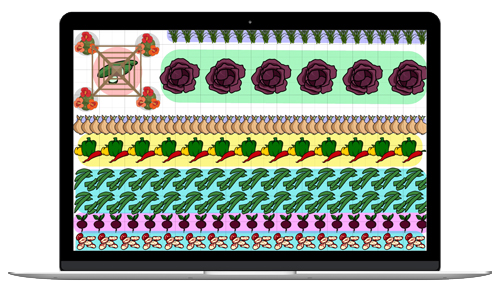
Planting, Growing, and Harvesting Rhubarb
The Almanac Garden Planner - Use It Free for 7 Days!
Plan your 2025 garden with our award-winning Garden Planner.
These common varieties have attractive red stalks and excellent growers:
- ‘Canada Red’
- ‘Crimson Red’
- ‘MacDonald’
- ‘Valentine’
In addition to the previous four, there is a reliable, green-stalked cultivar named:
- ‘Victoria’
Cooking Notes
Check out our list of best rhubarb recipes to put your fresh rhubarb to good use! Plus, learn how to make a rhubarb tonic.
ADVERTISEMENT
The best time to plant rhubarb is in early spring or in the fall. They go dormant in the fall and through winter. See above for additional guidance.
I have been told that you should not harvest and eat, rhubarb after the 4th of July, as the stalks may become poisonous. I was also just told, that you should not harvest and eat, if the plant has flowered / seed stalks. Are either of these true?
The 4th of July cutoff date is not because of any danger of poisoning. The eight to ten weeks of harvesting has passed and the plant now needs to feed the roots and prepare for next years production. The quality of the stalks usually has deteriorated as well but are not dangerous. The flower stalks have no effect on the plants edibility. They are removed so the plant can use its energy to produce stalks instead of seeds.
Hello, we moved into a house that has 2 huge, old Rhubarb plants. It looks like they were ignored for a few years. Should they be cut back to almost nothing? They already have seed heads on them. Thanks
Cut off the flower stalk—not the leaf stalks—at the base (don’t twist the flower stalk; instead, use a knife or pruning shears to make a clean cut on these tougher stalks). This way, the plant can focus its energy on forming leaf stalks (which might be useful to you now!). To help prevent bolting again this year, add mulch to keep roots cool during warm spells. Be sure that the plant is getting enough water, light, and nutrients, and isn’t overcrowded. Add lots of organic matter in fall. You should have many happy harvests in your future!
Large leaves and stalks, overall appears quite healthy. I have almost no red coloring on stalks. Is this normal? Can I still harvest ?
Because your rhubarb is in its third year, we’ll assume it’s not just a white variety. Perhaps your plant is getting too much sun. If the stalks are the right size for harvesting, try cutting off one to test, then take the rest if it seems ready. If not, let it mature a bit more.
I am a senior citizen and have had a hard time finding rhubarb to purchase, so last year I purchased a rhubarb plant and planted it in a large pot. I put it in the garage to keep through the winter as it gets very cold here at times.. it continued to grow in the garage! I then made sure I kept it watered occasionally. It now is just producing thin stalks that aren't large enough to break off for cooking. I was planning to repot it. Would it help or harm the plant or have I runined it already? Also would I need more than one plant to have enough to make a pie etc.? Thank you
Congratulations on keeping the rhubarb going in the garage. It must be in good soil in a good place. Thin stalks are typical of a first-year plant. As noted above, it is best not to harvest in the first year. You can repot it; this should not harm the plant. Set it in plenty of organic/composted matter and it should thrive. As for how much would you need for a pie, this one requires 2 1/2 cups: https://www.almanac.com/recipe/strawberry-rhubarb-pie-coconut-crumb-topping
You can see more rhubarb recipes, using varying amounts, that might appeal to you, too: https://www.almanac.com/content/best-rhubarb-recipes
Our rhubarb is well established. We moved it once for this exact reason thinking that was the case. The stalks do not turn red and the plants (we have 20 or so) all bolt quickly. Is there any truth to the male female stalks like corn has?












